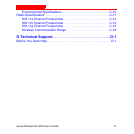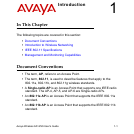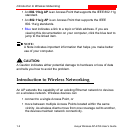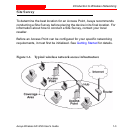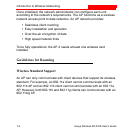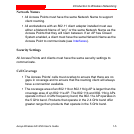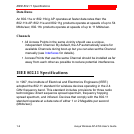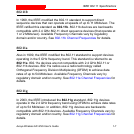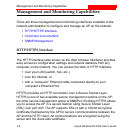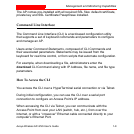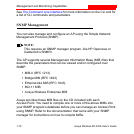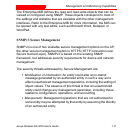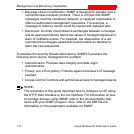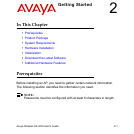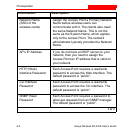
IEEE 802.11 Specifications
Avaya Wireless AP-4/5/6 User’s Guide 1-7
802.11b
In 1999, the IEEE modified the 802.11 standard to support direct
sequence devices that can operate at speeds of up to 11 Mbits/sec. The
IEEE ratified this standard as 802.11b. 802.11b devices are backwards
compatible with 2.4 GHz 802.11 direct sequence devices (that operate at
1 or 2 Mbits/sec). Available Frequency Channels vary by regulatory
domain and/or country. See 802.11b Channel Frequencies for details.
802.11a
Also in 1999, the IEEE modified the 802.11 standard to support devices
operating in the 5 GHz frequency band. This standard is referred to as
802.11a. 802.11a devices are not compatible with 2.4 GHz 802.11 or
802.11b devices. 802.11a radios use a radio technology called
Orthogonal Frequency Division Multiplexing (OFDM) to achieve data
rates of up to 54 Mbits/sec. Available Frequency Channels vary by
regulatory domain and/or country. See 802.11a Channel Frequencies for
details.
802.11g
In 2003, the IEEE introduced the 802.11g standard. 802.11g devices
operate in the 2.4 GHz frequency band using OFDM to achieve data rates
of up to 54 Mbits/sec. In addition, 802.11g devices are backwards
compatible with 802.11b devices. Available Frequency Channels vary by
regulatory domain and/or country. See 802.11g Channel Frequencies for
details.



